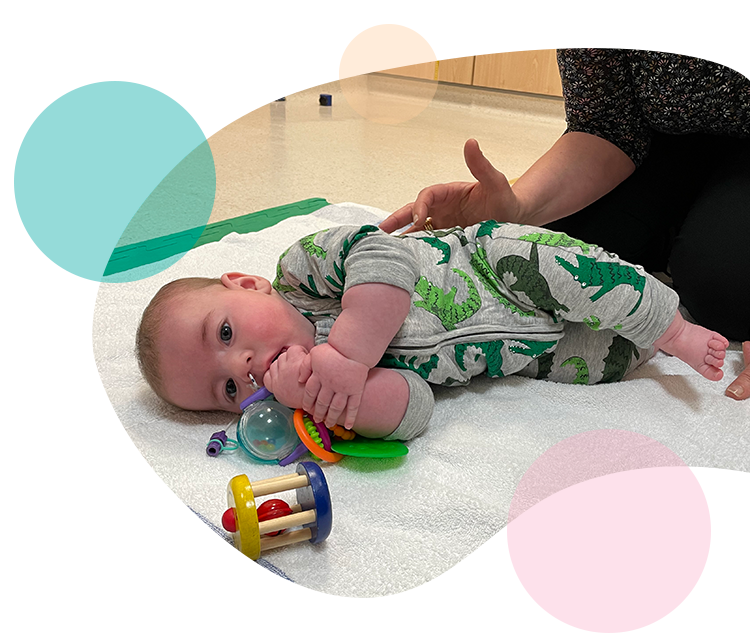The main goal of early intervention physiotherapy is to reduce the effect of disrupted brain development on a child’s movement development, from the beginning.
Babies learn many gross motor skills in a short period, in the first two years of life, including reaching, grasping, sitting and walking. The earliest baby movements are spontaneous, and they show a lot of variation. This variation provides a baseline from which all babies’ movement develops from, and helps them become successful movers. Trial and error is an important tool in a baby’s learning because it helps them to work out the best ways to do skilled movement tasks.
If brain development is disrupted early in life it can impact how movement and sensation is interpreted. This can reduce the movement variation baseline, and so reduce the range of movement options available to the baby. This means that their movement may look difficult, often slower and more awkward, which can cause delay in reaching important gross motor milestones, such as sitting. The main goal of early intervention physiotherapy is to reduce the effect of disrupted brain development on a child’s movement development, from the beginning.

